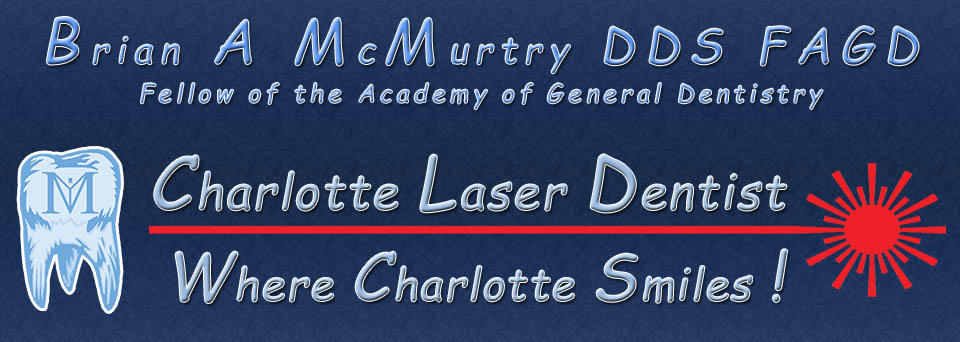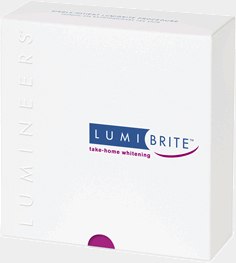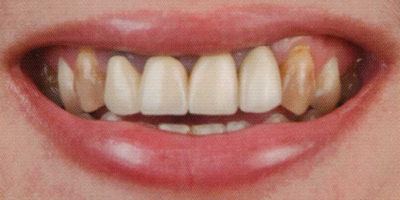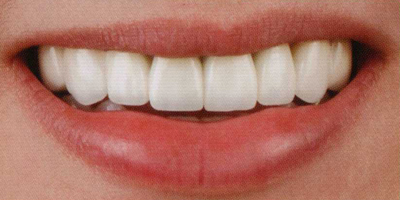
When any active issues are treated and controlled, Charlotte Cosmetic Dentist Dr. Brian A. McMurtry and his dedicated team of dental professionals would love nothing more than to be able to give you that smile of your dreams. Making sure any active issues are resolved is the foundation for any successful cosmetic dentistry treatment.
Cosmetic dentistry services offered in our Charlotte NC office include:
Please click on any of the "+" marks on the left to expand the cosmetic dentistry topics listed below.
| [ − ] Teeth Whitening |
Dr. McMurtry offers several different options for those patients who wish to whiten their smile.
|
The KöR Whitening Deep Bleaching™ System was invented by internationally renowned cosmetic dentist and whitening expert Dr. Rod Kurthy. Thousands of dentists around the world agree that KöR Whitening is by far the most reliable and effective whitening system ever developed. In fact, the KöR Whitening Deep Bleaching System is so effective, it is the only recognized whitening system that whitens even tetracycline-stained teeth in a short time (previously thought to be impossible). And now, these amazing KöR Whitening results are typically achieved with little to no sensitivity! |
 LUMIBRITE Take-Home Whitening – 3 minutes per day is all it takes!
LUMIBRITE Take-Home Whitening – 3 minutes per day is all it takes!
Other systems require 30 minutes a day, while LUMIBRITE Take-Home is proven to whiten smiles up to 9 shades with only 3 minutes of wear a day for 2 weeks — that's a total treatment time of only 42 minutes!
| [ − ] All Ceramic Crowns and Bridges |
All ceramic crowns create an extremely natural-looking appearance and are typically used on front teeth. The tooth-colored cosmetic ceramic material is translucent, like the enamel of your natural teeth, and size and shade can be carefully matched to complement the rest of your smile. However, ceramic dental crowns are not as resilient as metal crowns and do not function as well on back teeth, which sustain a lot of pressure from biting and chewing.
| [ − ] Lumineers and Veneers |
Veneers are ultra-thin shells of ceramic which are bonded to the front of teeth. This procedure requires little or no anesthesia and can be the ideal choice for improving the appearance of the front teeth. Veneers are placed to mask discolorations, to brighten teeth and to improve a smile.
Veneers are an excellent alternative to crowns in many situations. They provide a much more conservative approach to changing a tooth's color, size or shape. Veneers can mask undesirable defects, such as teeth stained by tetracycline and damage due to an injury or as a result of a root-canal procedure. They are ideal for masking discolored fillings in front teeth. Patients with gaps between their front teeth or teeth that are chipped or worn may consider veneers. Generally, veneers will last for many years, and the technique has shown remarkable longevity when properly performed.
To prepare the teeth for the veneers, the teeth are lightly buffed to allow for the small added thickness of the veneer. Usually, about half a millimeter of the tooth is removed, which may require a local anesthetic. A mold is taken of the teeth, which is sent to the laboratory for the fabrication of the veneers. This may take several days. If the teeth are too unsightly, a temporary veneer can be placed, at an additional cost.
When your ceramic veneers are ready, the dentist places each veneer on the teeth to check their fit and get a sense of the shade or color. While the veneers are resting on your teeth, view the results, and pay particular attention to the color. At this point, the color of the veneers can still be adjusted with the shade of the cement to be used. The color cannot be altered after veneers are cemented. To apply the veneer, the tooth is cleansed with specific chemicals to achieve a bond. Once a special cement is sandwiched between the veneer and tooth, a light beam hardens the cement.
| [ − ] Tooth-colored fillings |
A composite filling is a tooth-colored plastic and glass mixture used to restore decayed teeth. Composites are also used for cosmetic improvements of the smile by changing the color of the teeth or reshaping disfigured teeth.
How is a composite placed?
Following preparation, the dentist places the composite in layers, typically using a light specialized to harden each layer. When the process is finished, the dentist will shape the composite to fit the tooth. The dentist then polishes the composite to prevent staining and early wear.
What is the cost?
Prices vary, but composites can cost up to two times the price of a silver filling. Most dental insurance plans cover the cost of the composite up to the price of a silver filling, with the patient paying the difference. As composites continue to improve, insurance companies are more likely to increase their coverage of composites.
What are the advantages of composites?
Aesthetics are the main advantage of composites, since dentists can blend shades to create a color nearly identical to that of the actual tooth. Composites bond to the tooth to support the remaining tooth structure, which helps to prevent breakage and insulate the tooth from excessive temperature changes.
What are the disadvantages?
After receiving a composite, a patient may experience postoperative sensitivity. Also, the shade of the composite can change slightly if the patient drinks tea, coffee or other staining foods. The dentist can put a clear plastic coating over the composite to prevent the color from changing if a patient is particularly concerned about tooth color. Composites tend to wear out sooner than silver fillings in larger cavities, although they hold up as well in small cavities.
| [ − ] Dental Bonding |
Dental bonding is a procedure in which a tooth-colored resin material is applied and hardened with a special light, which ultimately "bonds" the material to the tooth to restore or improve person's smile.
Dental bonding is an option that can be considered:
| [ − ] Total Smile Makeover |
A smile makeover can encompass any of the above treatment modalities. At our Charlotte, NC office, Dr. McMurtry will use the latest technologies to help give you the smile you've always wanted. Give our office a call today.


See more in our Smile Gallery